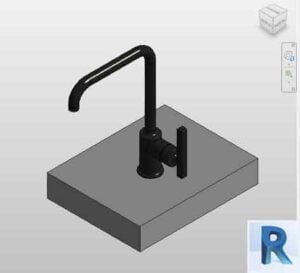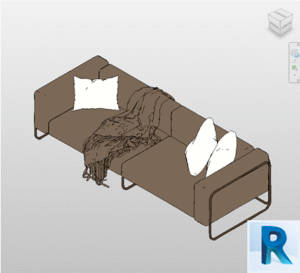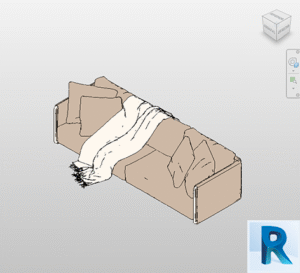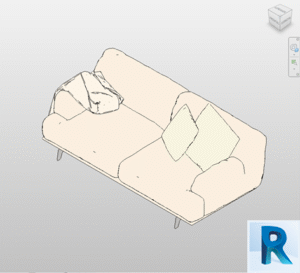Exploring As-Built BIM: A Key to Effective Building Management
In this article from Bimshares, we focus on the concept of As Built BIM – Definition and Advantages Building Information Modeling (BIM), a digital representation that accurately reflects the actual construction of a building and any changes made during the project’s lifecycle. As we progress in adopting BIM technologies, it’s essential to understand how to create and maintain these models to fully leverage their benefits.
The creation of As-Built BIM models is crucial for ensuring effective coordination among the various stakeholders involved in a project. Here, we delve into who is responsible for maintaining these models, how they are developed, and the advantages they offer.
What is As Built BIM ?
As-Built BIM involves creating a digital model of an already constructed building that captures its real-world condition, including any changes made during construction. This concept has gained significant traction with the increasing adoption of Building Information Modeling (BIM) technologies.
While traditionally architects and engineers have been responsible for updating As-Built models as projects advance, the growing adoption of BIM has led contractors and construction companies to increasingly take on this role, ensuring the coordinated and accurate exchange of information.
Responsibilities in Creating and Maintaining As Built BIM Models
The creation and maintenance of As Built BIM models require collaboration among multiple stakeholders in a project. Although architects and engineers have traditionally been responsible for updating As-Built models, the increased use of BIM technologies has meant that contractors and construction firms are now more actively involved to ensure that data remains coordinated and precise.
The primary responsibility lies with the project team, which must ensure that the As-Built model is continuously updated and accurate. This involves close collaboration among team members, including architects, engineers, contractors, and building owners. Each has a critical role in creating and maintaining the As-Built model, which is essential for effective project management and informed decision-making.
Formats for Creating As-Built Models (DWG, IFC, BCF)
As-Built models can be created in a variety of formats, including DWG (AutoCAD), IFC (Industry Foundation Classes), and BCF (Building Collaboration Format). The choice of format depends on the specific requirements of the project and the level of interoperability needed.
1. DWG Format
DWG is a widely used proprietary format developed by Autodesk and is commonly employed in the architecture, engineering, and construction (AEC) industry. It facilitates easy sharing among team members using AutoCAD or other compatible software, but it has limitations when sharing information with non-AEC stakeholders.

2. IFC Format
IFC is an open standard developed by the buildingSMART initiative, and it is supported by a wide range of software applications. IFC files enable seamless collaboration and data exchange across all phases of the construction lifecycle, making it an ideal choice for projects requiring high levels of interoperability.
3. BCF Format
BCF (Building Collaboration Format) is another open standard designed to facilitate coordination among stakeholders in the AEC industry. BCF files allow team members to share information easily across different software platforms like Autodesk Revit and Graphisoft ArchiCAD, ensuring accurate and coordinated data exchange throughout the project’s lifecycle.
Advantages of As-Built BIM
Creating an As Built BIM model offers several significant advantages for project stakeholders. Firstly, it provides a single source of truth that enhances coordination among all parties involved by minimizing errors and misunderstandings, which reduces the likelihood of issues during construction.
Additionally, an As-Built BIM model is essential for the management and maintenance of a building post-construction. With an accurate digital record, building owners and facilities managers can better plan and execute maintenance and repair tasks, optimizing operational efficiency and reducing costs.
Enhancing Stakeholder Coordination
An As-Built BIM model is crucial for enhancing coordination among all stakeholders in a project. By providing access to a single source of truth, architects, engineers, contractors, and owners can work more effectively together, reducing errors and minimizing conflicts. The ability to visualize the current state of the building enables all parties to better understand their roles and the impact of their actions on the project as a whole.
This coordination is particularly valuable during the construction phase, where multiple stakeholders are involved. An accurate and up-to-date As-Built BIM model can help prevent misunderstandings and mistakes, saving time and reducing costs. Furthermore, it allows contractors to identify and resolve construction issues before they escalate, ensuring a smoother project delivery.
Supporting Building Management and Maintenance
As-Built BIM models play a critical role in the ongoing management and maintenance of buildings by providing a precise understanding of the building’s current state and facilitating the planning of future interventions. With a digitized and updated model, managers can easily identify repair or renovation needs, reducing the time and costs associated with these activities.
Moreover, As-Built BIM models promote better coordination among different stakeholders, such as owners, architects, engineers, and contractors, resulting in more efficient project management and reduced risks of errors or misunderstandings.
Increasing Transparency in Construction
The use of As Built BIM models fosters greater transparency in the construction process. With a precise, up-to-date digital model, stakeholders have access to accurate and reliable information, reducing the potential for errors and misunderstandings and minimizing conflicts during construction.
Transparency is critical for ensuring efficiency and productivity in construction. Having accurate, real-time information allows builders to plan and coordinate activities more effectively, reducing construction time and costs. Moreover, transparency also helps minimize errors and defects, resulting in a safer and more durable building.
A Vision for the Future: Beyond As-Built BIM
Looking beyond traditional applications, the future of As-Built BIM is about leveraging its potential to drive innovation in facility management, sustainability, and smart building technologies. As buildings become more complex and interconnected, As-Built BIM models will play a pivotal role in integrating new technologies such as IoT sensors, AI-driven analytics, and digital twins.
By embedding these advanced technologies into As-Built BIM, stakeholders can gain even deeper insights into building performance, enabling predictive maintenance, optimizing energy efficiency, and enhancing occupant comfort and safety. The next generation of As-Built BIM will not only be about accurate documentation but also about creating a dynamic, intelligent representation of buildings that evolves with their use and environment.
As we continue to push the boundaries of what is possible with BIM, the industry must embrace a forward-thinking approach to fully realize the potential of As-Built BIM. The future holds exciting possibilities, and those who adopt these advanced strategies will be well-positioned to lead the charge in transforming the built environment.
Free Revit families on Bimshares.com





